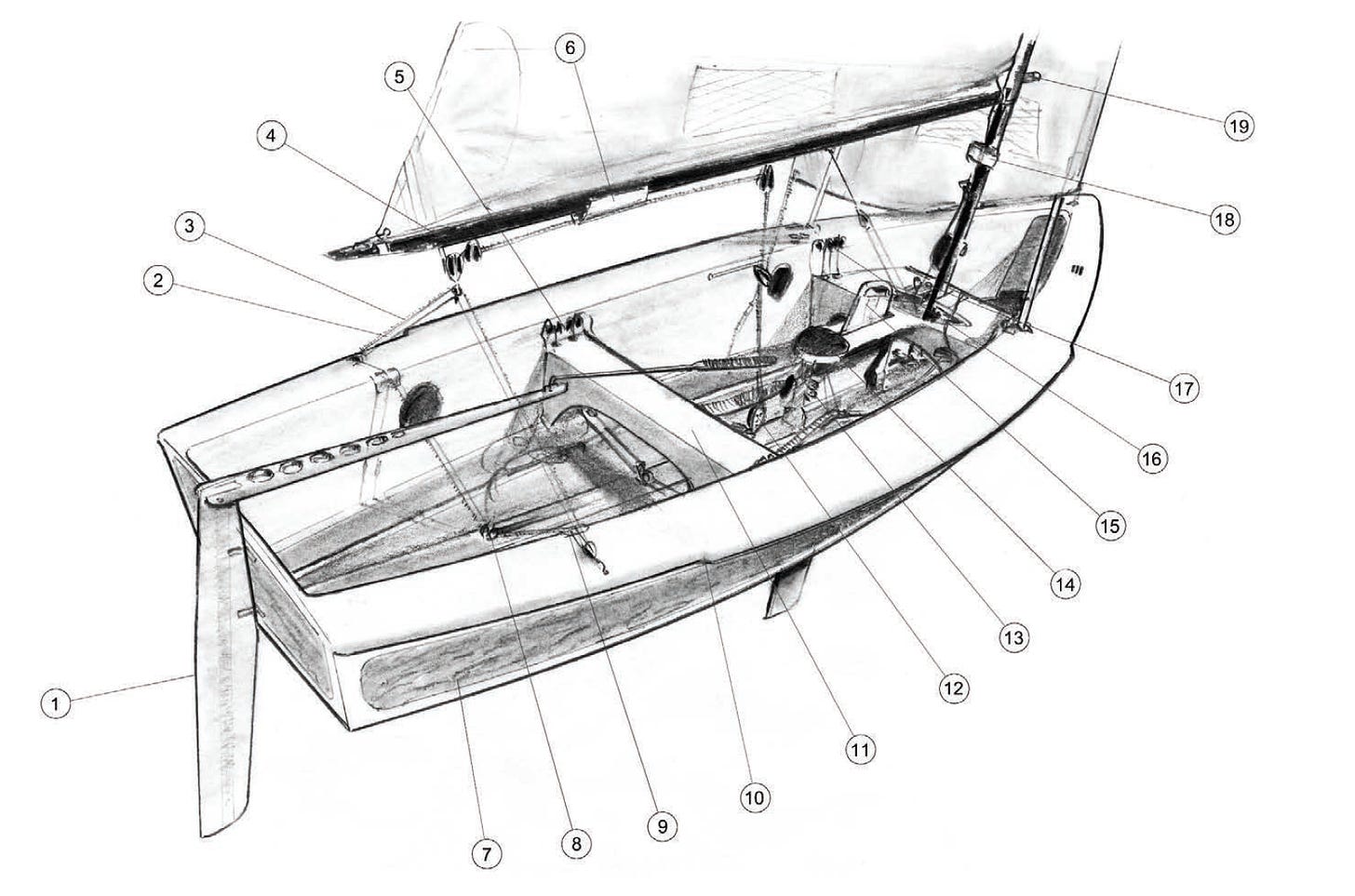Clark Mills designed the astonishingly but accidentally successful Optimist Pram in 1947. He followed up in 1953 with the 15'6" Windmill as an economical build-it-yourself racer to which Opti sailors could graduate.
The Windmill is similar in size to the famous Snipe, but lighter, simpler, and faster. As in the Snipe, trapezes and spinnakers are not permitted. That feature, combined with a genial Class Association, makes the Windmill appealing to sailors of a wide range of ages and skills. While in high school I restored a derelict fiberglass Windmill, hull #3247.
The Windmill rudder has recently evolved from barn door to narrow fin.
Upper line in traveler controls leech tension.
Lower line in traveler allows you to dial in the mainsail twist.
Upwind, the mainsheet is usually block-to-blocked, centering the boom.
Traveler controls led to both sides.
Sailcloth fairlead to eliminate mainsheet droop.
Varnished bubinga veneer laminated over 4mm okoume side panels.
Traveler control leads.
Friction here. A hassle to create internal leads for the traveler stuff.
Rails cut away at bow and stern to save weight.
Thwart. Sitting here is considered very bad form, as it trims the boat by the stern. There are tales of broken glass glued to the thwart as a deterrent.
Mainsheet ratchet block mounted on hull bottom; good ergonomics.
Lesser controls such as Cunningham and outhaul led to here.
My famous cushioned straddle-seat for the crew.
Daggerboard pivots through a wide arc to allow trim adjustments.
Boom vang and jib halyard tension controls led to both sides.
Whisker pole launcher. I’d need three pages to explain THAT.
Computer thing.
Stowed whisker pole. Pulling on a single line deploys or stows it.
I was already a good young sailor, but #3247’s heavy wooden mast and blown-out sails resulted in a bloody clobbering on the race course.
A cool feature of the Windmill is that homebuilt wooden versions are still competitive with the ‘glass hulls. While in college, a friend and I built three new plywood hulls on a single mold. Our boats weighed 166 pounds–requiring 32 pounds in corrector weights–and were very fast, though it took me a few thousand more starts and roll tacks as a member of the college sailing team before I could steer the thing the fastest way around a triangle course.
I built mine over a male mold with stringers. More recently the Class has adopted modern wood-epoxy construction techniques, but it’s not a first-timer project. I’ll also note, for the sake of present company, that it’s an absolutely lousy camp-cruiser. •SCA•
First appeared in issue #127


OH my, I raced 3255 at Christchurch School in 75 and 76. Likely 3247 was also produced in Gloucester, Va. I loved the wooden mast. CCS had only one left, mine. The rest were round aluminum masts that flexed like a noodle. I lived for 15 to 20mph winds on the Rappahannock. While planing my crew would get hits with buckets of water as the angle of the bow would have it no other way. That boat could move. They took a pole in 76' with regard to the rudder blade upgrade. I thought I heard it stayed the same.
http://windmillclass.myfleet.org/